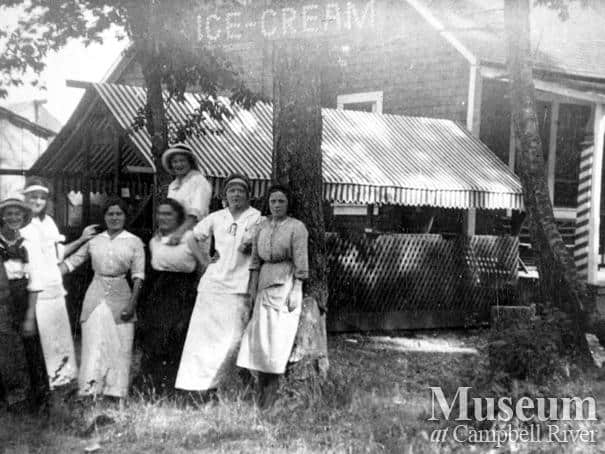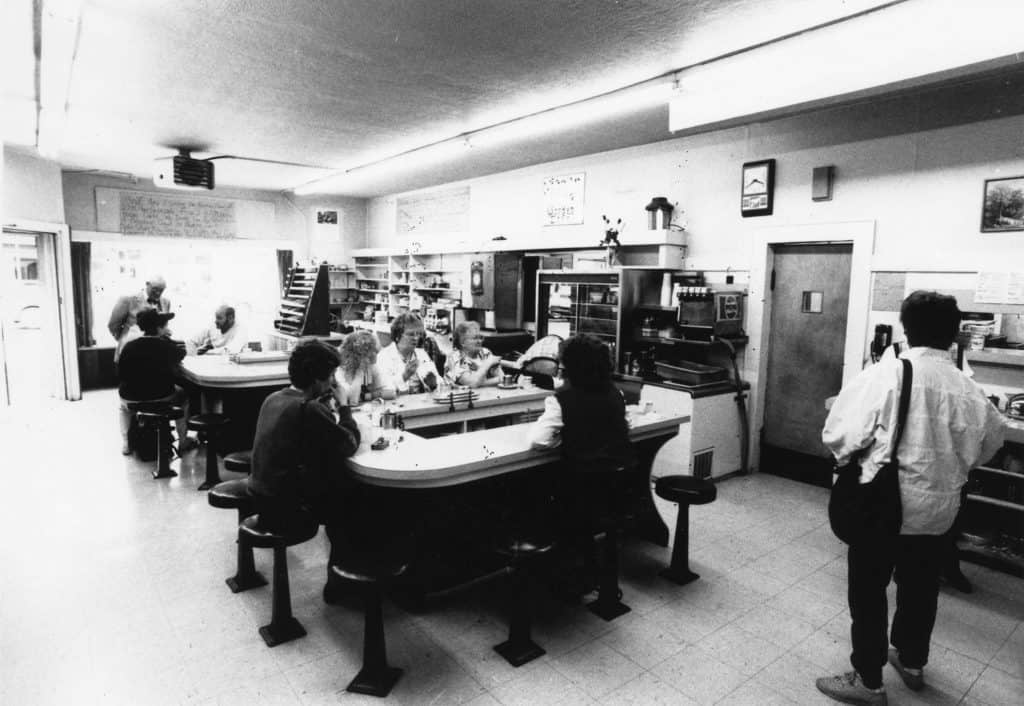“If you wanted to get the latest scuttlebutt, then you went over to the Bee Hive about coffee time” explained Mr. Waldref, who had a photographic studio across from the Bee Hive Café in the ‘60s, in an interview in 1989. In a 1988 interview, long time Campbell River resident Pat Turner described the Bee Hive Café as a community meeting place. “It never bothered you to go alone to the Beehive. You knew sooner or later you’d meet someone you knew.” She continued “It was such a social place for many people. It wasn’t just a teen’s café, older people went there too. Everyone was comfortable there. It was a real family place.”
The original Bee Hive Café was built in 1918 and was an ice cream parlour with a saloon and a pool room, and was operated by T.W. Hansen. In 1929 Carl and Margaret Thulin took over operation and moved the Bee Hive to a newly built location known as the “Bee Hive Block” in 1937. Art Rose took over operation of the Bee Hive in 1947, and he sold to Bob Ahearn three years later. After a huge storm flooded the basement in 1956, Skip MacDonald bought the café with his friend Bob Lewis. Eventually Skip took over sole proprietorship and in 1988 he built a new building to house the Bee Hive as well as a new restaurant. MacDonald retired and sold to the Bendicksons in 1995.

Skip MacDonald recalls the popular banana splits that the Bee Hive served. “We made our own hard ice cream. For the banana split you would use the three ice cream flavours – strawberry, vanilla and chocolate. I remember chasing around town searching for bananas because we had run out and stores would be closed because it was a holiday or something.” He explained that you needed just the right bananas. “You have got to have them at the right time. You don’t want them green, nobody wants to eat green bananas. And they can’t be over ripe or they would go rotten very quickly. We would order a case of petites. Petites were a smaller banana. They just fit in the dish nicely, where the larger banana was hanging over the dish at both ends and was kind of a sloppy looking thing.” The Bee Hive also had the first soft ice cream machine in town. It was ordered from Chicago, and when breakdowns occurred their refrigeration guy would have to go looking for used parts out of the States to get the machine running again. Skip described the advantage of making the milkshakes with soft ice cream. “The hard ice cream had a tendency to flip. First thing you know you flip one of those stainless steel milkshake tins right off the spindle and you have the ice cream and the flavor base all over the floor.”

Stella Moore worked at the Bee Hive in the 1970s. “It was a lot of fun there, the people who worked there were all friends. We were mostly older women working there.” When asked what made the Bee Hive Café so special, Stella explained “It was the only restaurant with a jukebox, so all the kids would come there and put their quarters in and listen to music. The food was wonderful, it was all home cooked. The fish and chips was especially good. We laughed a lot there, and it was a nice spot overlooking the water.”
Mr. Waldref also recalled the jukebox as being the centre of attention at the Bee Hive. “They had a jukebox in there for as long as I can remember. Skip, he could control the volume from the front. The kids would yell turn it up, and then someone else would holler leave it alone, then someone would say turn it down.”

This article first appeared in the Campbell River Mirror in December 2017 and was written by Erica Anderson.
